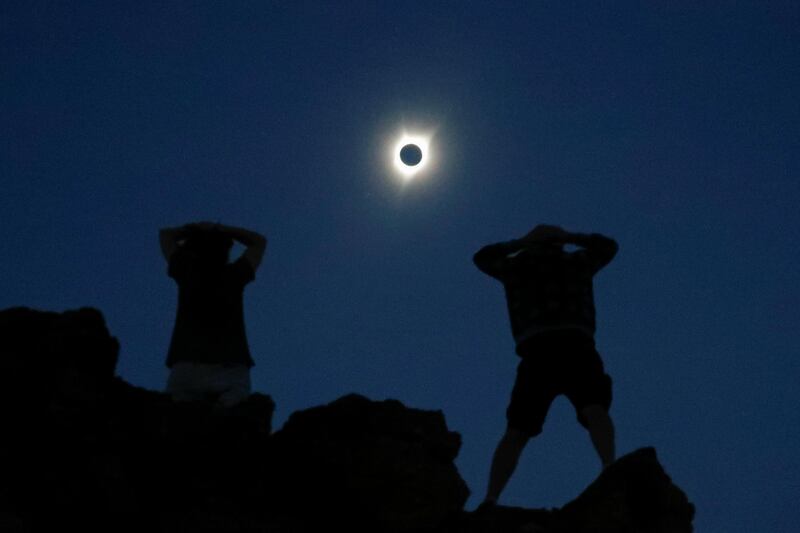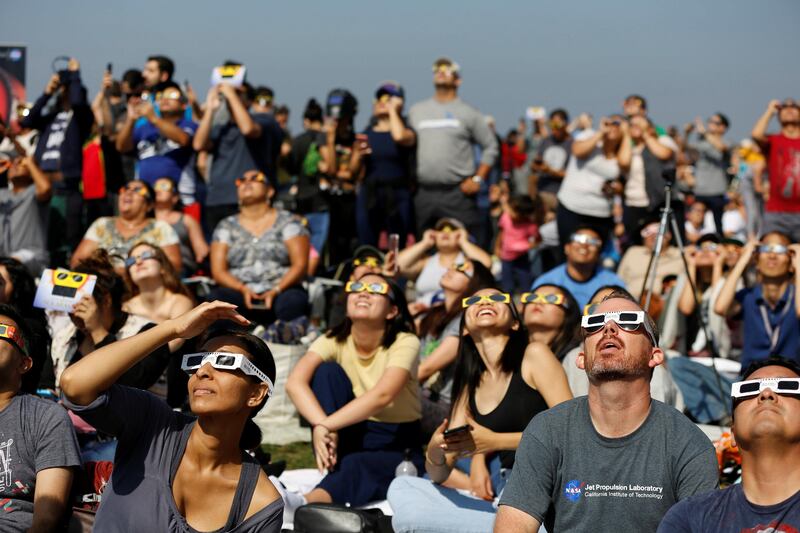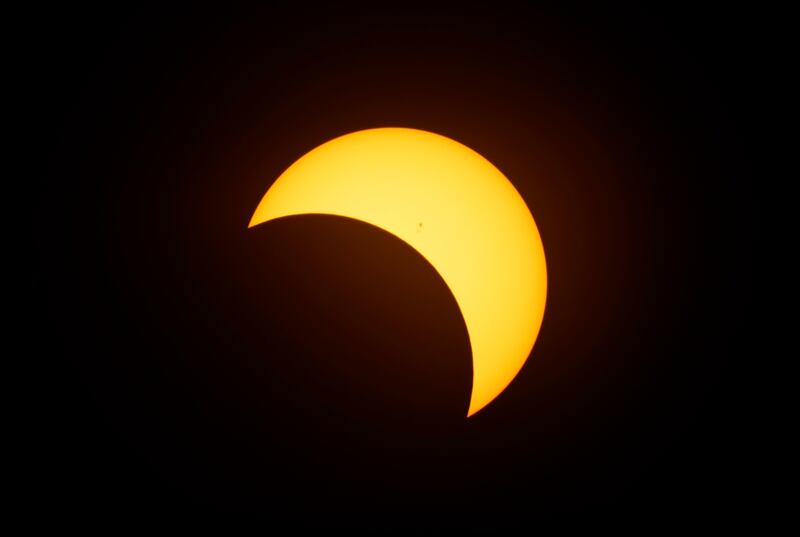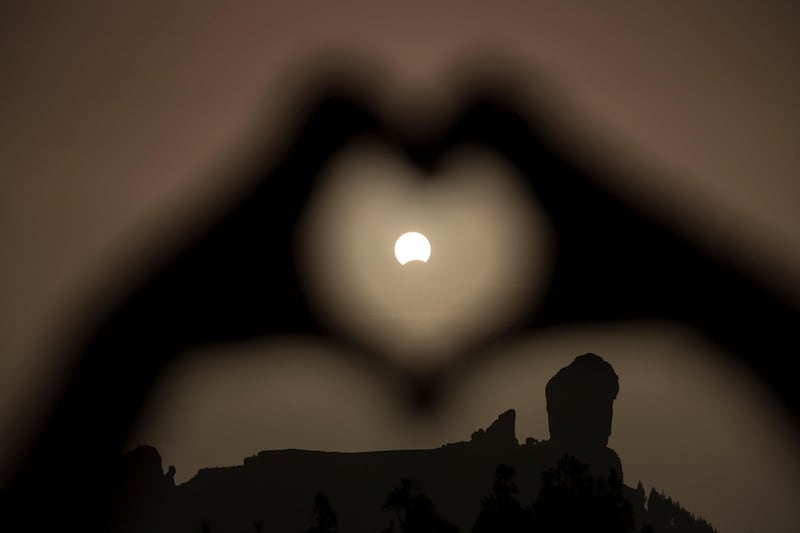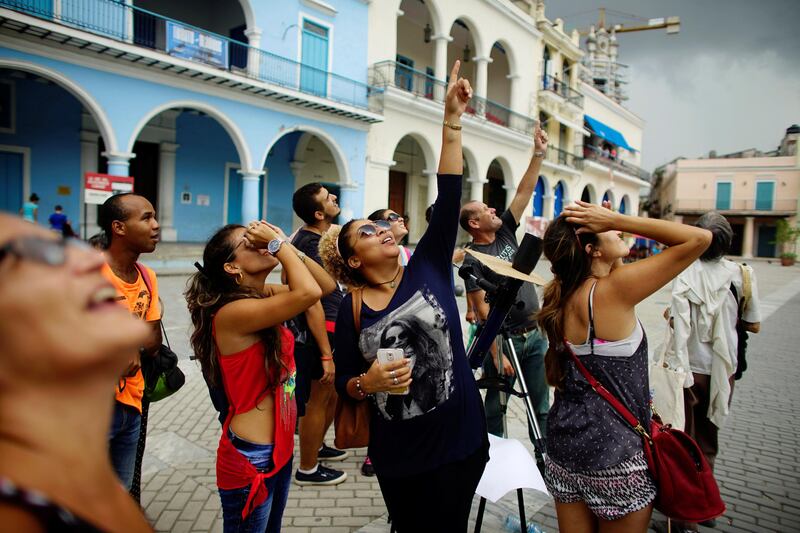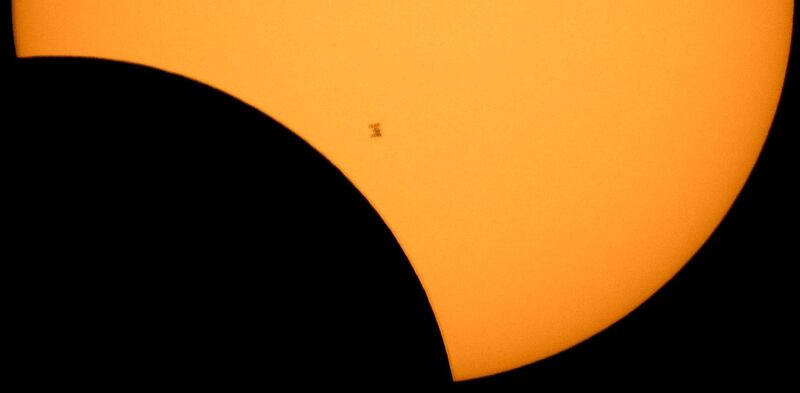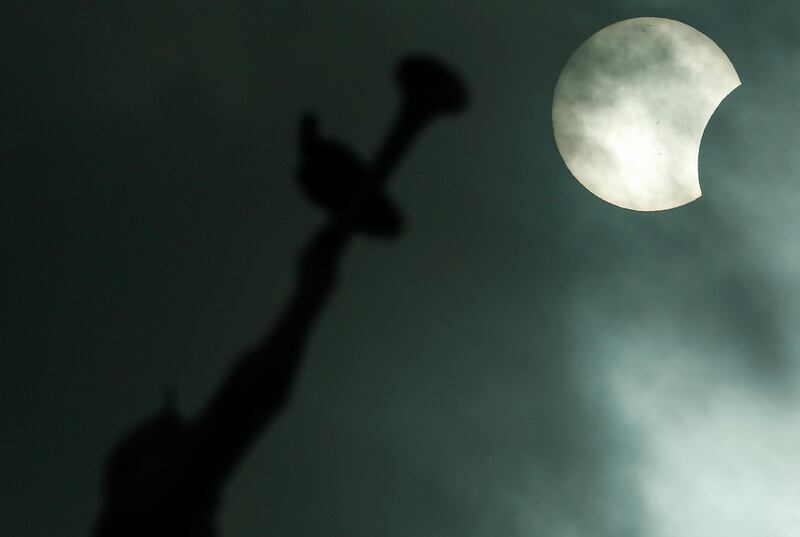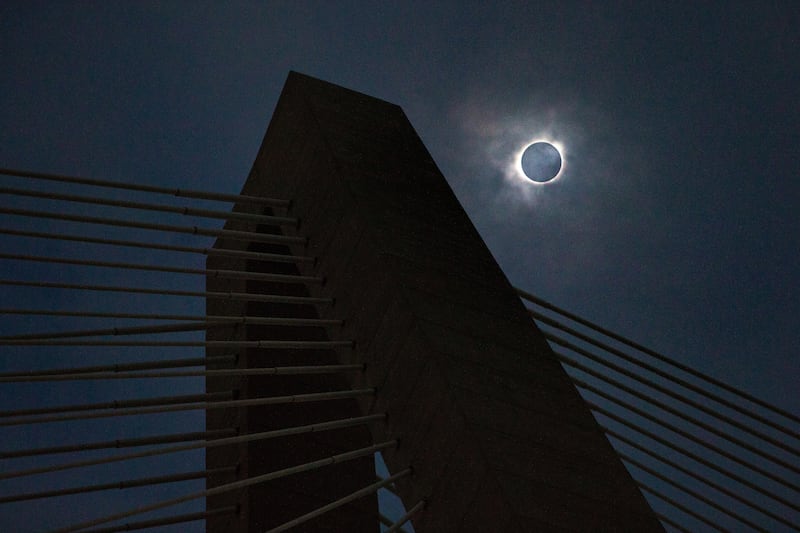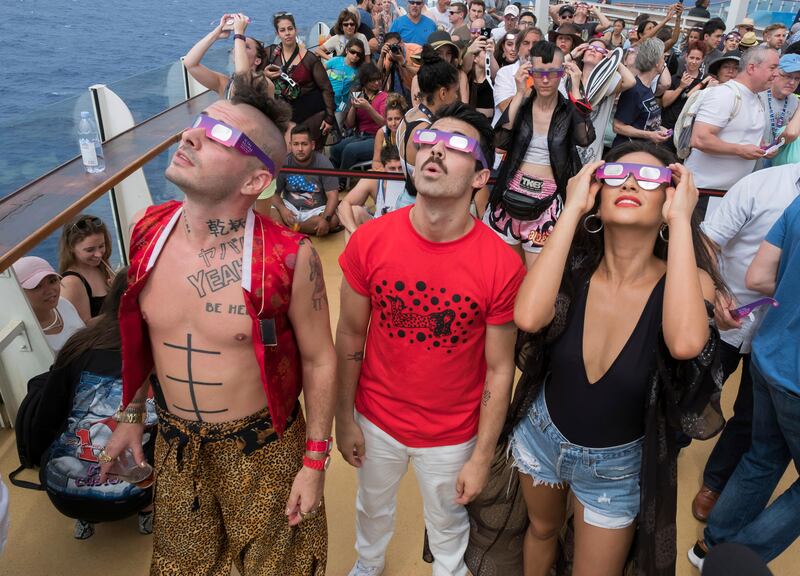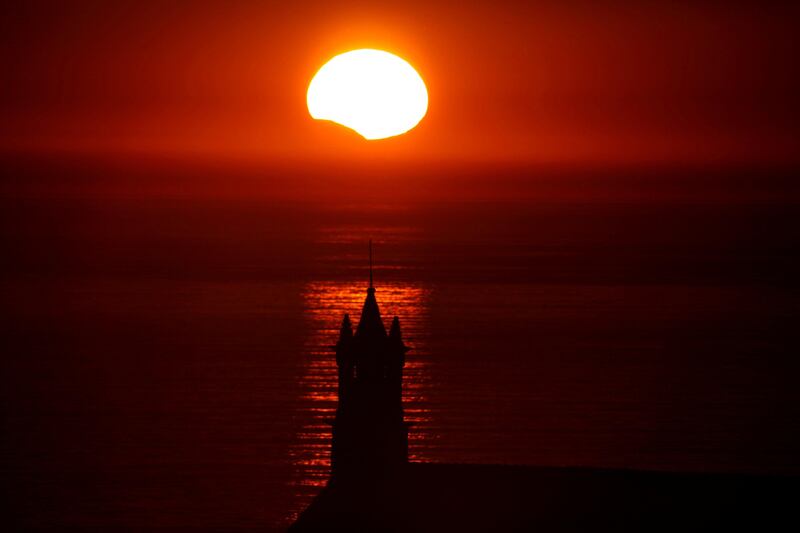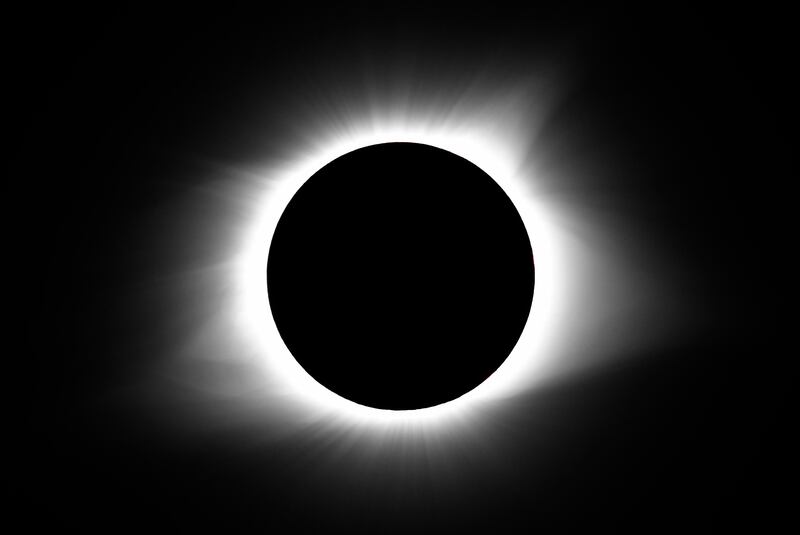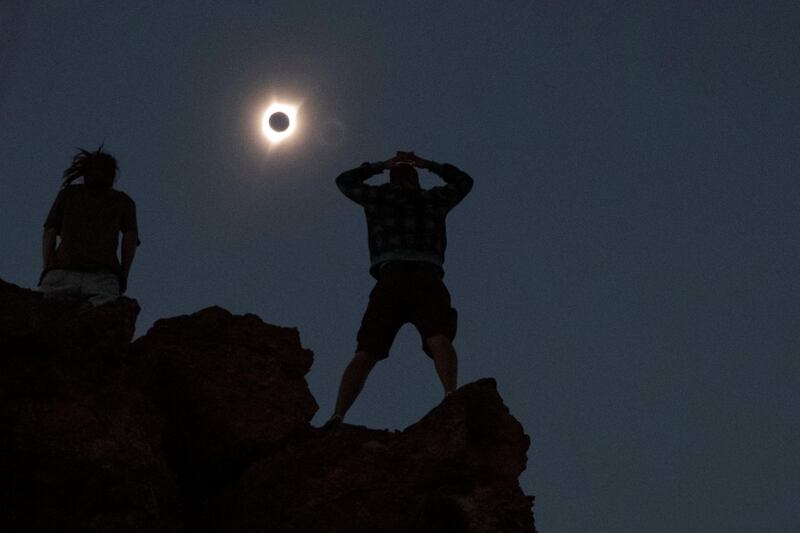A band of twilight will stretch across America at midday on Monday, silencing birds and bringing a swath of the country to a standstill as millions of people soak up the eerie stillness of the first total solar eclipse to stretch coast to coast in almost a century.
In all, as many as seven million people are expected to converge on towns and cities along the 70-mile-wide path of totality for festivals of music, yoga and astronomy.
We’re live on @Twitter @Periscope with coverage of #SolarEclipse2017 across America! Tune in now: https://t.co/Wbaid2DrfL
— NASA (@NASA) August 21, 2017
South Carolina in particular is gearing up for a huge influx. Its location means it is the state closest to the heavily populated Eastern seaboard where viewers will be able to witness the moon pass directly in front of the sun, blotting out all but the halo-like solar corona.
On the other side of the country, thousands more are expected to turn out in Oregon where the moon’s shadow will first make landfall.
Eclipse over USA's west coast
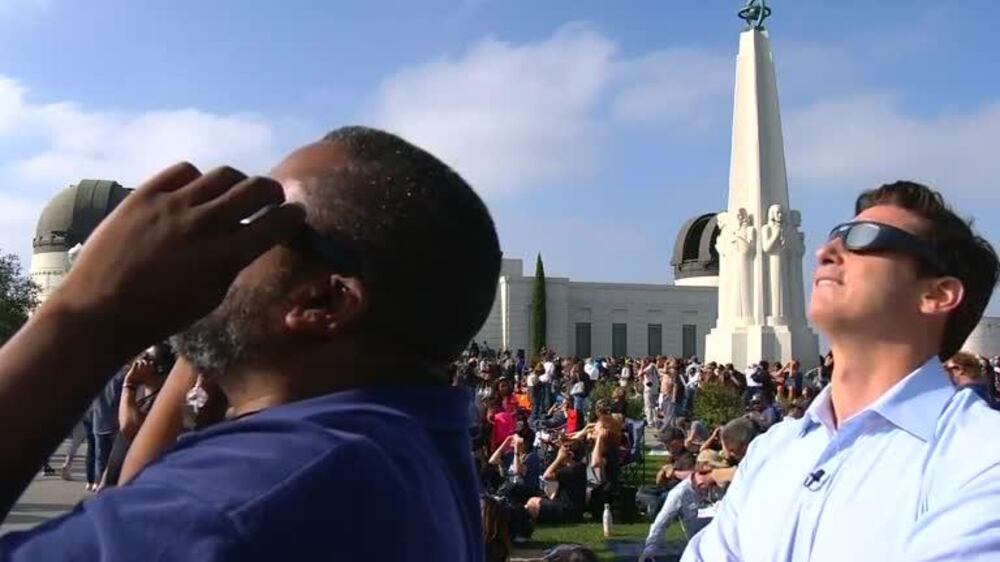
But for those who want to make the most of this once-in-a-lifetime moment, there is perhaps only one place to be. Bonnie Tyler will be performing her 1983 hit Total Eclipse of the Heart aboard a cruise liner carefully positioned in the path of the eclipse.
______________
Read more:
Fly to the US solar eclipse in style for $10,000 a seat - plus you get a lawn chair
______________
"It’s going to be so exciting," she told Time magazine. "It doesn't happen very often, does it?"
She was due to board the Oasis of the Seas in Orlando, Florida, on Sunday for a special Caribbean cruise.
However, she will have to work fast. She will have and two minutes and 40 seconds to belt out her signature song before the shadow has passed.
At that speed it will cross the continental US in about 90 minutes but that is still enough time – coupled with modern technology from social media to hi-tech optics - to make it a record setter.
“It will certainly be the most observed total eclipse in history," astronomer Rick Fienberg of the American Astronomical Society (AAS) said last week.
Total solar eclipses are rare enough. This one falls across one of the world’s most heavily populated countries at the height of the summer holiday.
As a result, it has been named the Great American Eclipse by excited news channels planning mass coverage and prompted a slew of warnings to ensure observers protect their eyes with eclipse glasses or certified filters.
For true believers, it is sign of great portent.
“I believe it is a prophetic sign,” said Paul Begley, host of the Coming Apocalypse radio show and a popular purveyor of conspiracy theories on YouTube.
Mr Begley cites the Book of Joel (from the Hebrew Bible), which says “the sun shall be turned to darkness” on the day before Christ’s return.
Others have more prosaic concerns. Police, city managers and forest rangers in the total eclipse zone are making plans to deal with the surge in travellers amid fears of mammoth road tailbacks heightened wildfire hazards.
“Imagine 20 Woodstock festivals occurring simultaneously across the nation,” is how Michael Zeiler, an AAS advisory panel member put it on his website, GreatAmericanEclipse.com, drawing a comparison to the sprawling, chaotic 1969 music festival in upstate New York.
Those who miss out this time will not have a long wait for the next big solar eclipse. Although Monday’s is the first to cross the entire continental since 1918 and the first visible anywhere in the mainland US for 38 years, another total eclipse will stretch diagonally from Texas through the north-east states in April 2024.
